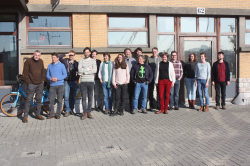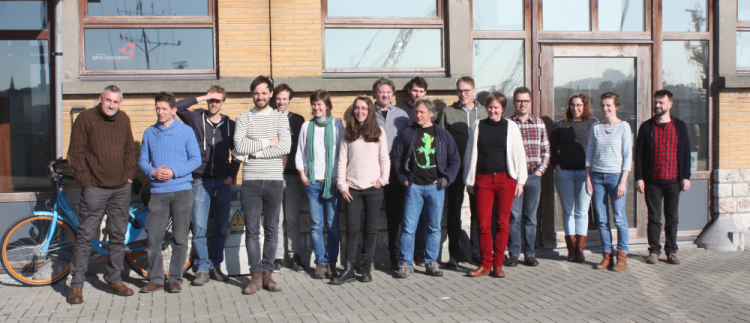LifeWatch Data Analysis Workshop: Towards improved LifeWatch sampling campaigns
On February 22nd-23rd 2018, 22 experts met at the Flanders Marine Institute (VLIZ) in Ostend to explore how the LifeWatch sampling campaigns can be improved and how the generated long-term data series can be analyzed.

Since 2002, VLIZ has sampled 9 stations in the Belgian part of the North Sea (BPNS) on a monthly basis, and 17 stations on a seasonal basis. These sampling campaigns have been performed with the RV Zeeleeuw until 2012, when this research vessel was replaced by the RV Simon Stevin, a multi-purpose research vessel, especially designed for research operations in the Southern Bight of the North Sea. These sampling campaigns are organized in close collaboration with several marine scientists at the universities, research institutes and Flemish administrations.
During these LifeWatch sampling campaigns, samples are collected for biodiversity and environmental parameters. Salinity, temperature, chlorophyll A, nitrate, nitrite, pCO2 and sound velocity of the water are measured continuously. At each station depth profiles are taken including temperature, pH, salinity, conductivity, turbidity, sound velocity of the water and PAR. At last, Secchi depth, suspended particulate matter (SPM) and CO2 are measured. Water samples are taken to measure nutrients (nitrate, nitrite, phosphorus, ammonium and silica), and several pigments. For biotic factors, Van Veen samples are taken to sample macrobenthos and a vertical WP2 net is hauled to collect zooplankton. Phytoplankton is monitored using the flow cytometer on the continuous water flow (since December 2014).
During a two-day LifeWatch Data Analysis Workshop in February 2017, 22 experts from the Flanders Marine Institute (VLIZ), the Research Institute for Agriculture, Fisheries and Food (ILVO), Ghent University, the Research Institute for Nature and Forest (INBO), the Operational Directorate Natural Environment (OD Nature) and Onderzoeksprogramma Milieu-Effecten Sigmaplan (OMES) met in Ostend to compile an overview of the long-term monitoring approaches and strategies, to analyze the LifeWatch sampling campaign results, to evaluate the current sampling strategy and to discuss how to further optimize.

During these LifeWatch sampling campaigns, samples are collected for biodiversity and environmental parameters. Salinity, temperature, chlorophyll A, nitrate, nitrite, pCO2 and sound velocity of the water are measured continuously. At each station depth profiles are taken including temperature, pH, salinity, conductivity, turbidity, sound velocity of the water and PAR. At last, Secchi depth, suspended particulate matter (SPM) and CO2 are measured. Water samples are taken to measure nutrients (nitrate, nitrite, phosphorus, ammonium and silica), and several pigments. For biotic factors, Van Veen samples are taken to sample macrobenthos and a vertical WP2 net is hauled to collect zooplankton. Phytoplankton is monitored using the flow cytometer on the continuous water flow (since December 2014).
During a two-day LifeWatch Data Analysis Workshop in February 2017, 22 experts from the Flanders Marine Institute (VLIZ), the Research Institute for Agriculture, Fisheries and Food (ILVO), Ghent University, the Research Institute for Nature and Forest (INBO), the Operational Directorate Natural Environment (OD Nature) and Onderzoeksprogramma Milieu-Effecten Sigmaplan (OMES) met in Ostend to compile an overview of the long-term monitoring approaches and strategies, to analyze the LifeWatch sampling campaign results, to evaluate the current sampling strategy and to discuss how to further optimize.




